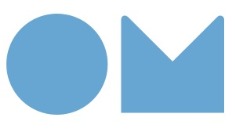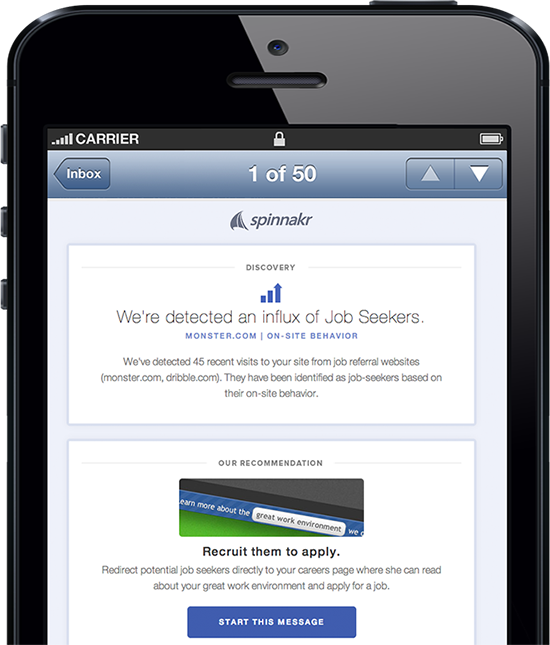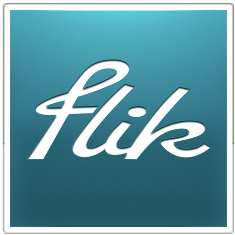 A Q&A with OMsignal co-founder and CEO Stephane Marceau. The Montreal-based startup raised $1 million in Seed funding in early-June from Real Ventures, Golden Venture Partners and David Cohen. It was founded in 2011.
A Q&A with OMsignal co-founder and CEO Stephane Marceau. The Montreal-based startup raised $1 million in Seed funding in early-June from Real Ventures, Golden Venture Partners and David Cohen. It was founded in 2011.
SUB: Please describe OMsignal and your primary innovation.
Marceau: OMsignal has developed a revolutionary line of bio-sensing clothing that connects seamlessly with mobile devices. We capture physiological signals acquired from the body such as ECG, breathing patterns, and physical activity, and interpret them to deliver engaging information and actionable insights.
By now, the fact that wearable computing is exploding has become a widely accepted notion, at least in tech circles. What is novel about OMsignal is that we focus on a different form factor, a different wearable medium, and with different types of personal signals. Our shirts and bras are capturing deep bio-signals directly from your core body area. Our garments are designed for all day wear, for a normal lifestyle, across a very large spectrum of activities. This enables us to provide more meaningful and engaging feedback. For example, from the core bio-signals we acquire, we derive information about basic emotive state.
Fred [co-founder and Chief Product Officer Frederic Chanay] and I were working on contract with a very large corporation in 2008, helping them in entering the mobile health space. We travelled the world to assess various sensors and wearable form factors. From this experience, we developed an incredibly simple thesis: that the most natural wearable computing category is what we already wear—i.e. clothes—and that apparel gives access to greater body footprint, therefore in many cases, to deeper, clearer signals.
SUB: Who are your target markets and users?
Marceau: We aim to build a Gore-Tex like model, helping partners in various verticals in developing bio-sensing apparel solutions for their respective customers or for their patients. We just came out of stealth earlier in June and within twenty-four hours of our launch were approached by large players from consumer brands, telecoms, mobile OEMs, sports apparel, medical sectors, even from military and aerospace sectors.
SUB: Who do you consider to be your competition?
Marceau: We think there will be a plethora of successful companies in the wearable computing market and at this stage everyone is contributing to making that market happen. The game at this stage is really about serving and delighting the herd of new comers to the exploding wearable category. It is far more about innovation and growth than substitutive competition for now. In terms of our approach as a bio-sensing apparel platform specifically designed for all day wear, we are not aware of any direct competitor at this stage. This said, the idea at its core is evident so we expect others will bring their products to market.
SUB: What differentiates OMsignal from the competition?
Marceau: OMsignal is unique in that it is seamless in both construction and usability. It’s comfortable to wear and fits into everyday life without impeding normal life. We bring passive tracking and monitoring in a dry—meaning no need to add gel or water on the sensors, as in real life—environment through an everyday form factor. Our shirt allows for greater body ‘real estate’ so we can read signals that were not captured before, such as breathing. Having access to greater body surface means we can measure bio signals with greater precision and detail.
It took us hundreds, maybe over a thousand iterations of our product to get to that point. There are at least two videos from ‘Omies’—team members—on our website, which give an idea what is involved in the process of building bio-sensing apparel (http://www.youtube.com/watch?feature=player_embedded&v=IBDa2kGqutM#!; http://www.youtube.com/watch?feature=player_embedded&v=BylT-dI23nE).
We’re also a small team representing multiple unique specializations. Our team is comprised of scientists, engineers, fashion designers, intelligent textile fiber specialists, medical practitioners, bio-signal engineers, as well as mobile UX and mobile product experts. We’re very diverse culturally as well—we have people raised in 12 different countries.
SUB: When was the company founded and what were the first steps you took in establishing it?
Marceau: Fred and I have been thinking about OMsignal for many years—since 2008. We started the company with a real focus at the end of 2011. When we decided to build OMsignal, we realized as tech and media guys with zero experience in fashion, we needed to start the project with e-textile and apparel specialists. We looked for the best talent in the world and were lucky to find out—by reading a UK publication—two experts right in our back yard in Montreal: Joanna Berzowska, an MIT media labs pioneer and global speaker on electronic textile, and Ying Gao, whose sensory fashion designs are shown in art movies and top galleries worldwide. We also found a series of great and specialized partners we work with very closely to this day in several different areas.
SUB: What was the inspiration behind the idea for OMsignal? Was there an ‘aha’ moment, or was the idea more gradual in developing?
Marceau: There are a few experiences and interests that led to the creation of OMsignal. First, I’ve always been curious about the world inside, how we tick on an emotional and physiological level. Secondly, I also saw an opportunity to bring more transparency to health and to the healing process through greater accessibility of datasets and normalized bio-information captured in real life contexts. Just imagine the insights when millions of people will naturally bio-stream health related data and their context, into the cloud, as they go about their everyday life. A third source of Inspiration has to do with my experience with Yoga and the realization of how profoundly helpful mindful breathing can be. We are one of the very few solutions out there tracking breathing patterns.
SUB: How did you come up with the name? What is the story behind it?
Marceau: My wife found it. Fred and I were playing with ‘VibeSignal’ and other variations as company name. Notion is about signals from within yourself. We were working in my office/gym in the basement of my house. She passed by so we just asked her on the fly. Her spontaneous answer was: “why not OMsignal?,” then walked away. We knew we had found it.
SUB: You recently raised $1 million in Seed funding. Why was this a particularly good time to raise funding?
Marceau: This is the right time for bio-sensing apparel because electronic components have gotten smaller, cheaper and easier to integrate into textiles. It’s a time when revolutionary, functional fibers can replace traditional electronic components. And of course the proliferation of mobile phones has opened up opportunities and possibilities for wearable computing and electronic textiles. Very importantly, consumers are spending on wearable for health and wellness, the consumer movement has outgrown the fringes. Just look at the commercial success of the Fitbit, Jawbone UP, Nike Fuelband.
SUB: Do you have plans to raise more venture funding in the near future?
Marceau: Yes. OMsignal is targeting an immense market. We have been amazingly capital efficient and will continue to be but will need to fund our go-to-market.
SUB: What have the most significant obstacles been so far to building the company?
Marceau: One of them has to do with developing a consumer-grade product, which brings together textile, electronics and software, and mobile and cloud. The world of textile doesn’t necessarily work like the software or hardware worlds. It doesn’t have the same parameters as say a microprocessor where you can select specific features. In the world of textile, every fiber acts differently. So to design a shirt for comfort and cost efficiency, it took a lot of time to understand the parameters in order to get the quality we want. Another challenge was finding textile providers who can work at the speed of a startup. It’s understandable considering the supply chain, yet we need weekly iterations, not monthly. We are very fortunate to work with partners who share our vision and are willing to make the investment and effort to work at our speed. Lastly, to actually develop electronic textiles is a true integration of both electronics and textiles. One has to be both artist and electronic engineer, thinking in completely new ways. It’s very exciting, the future has arrived!
SUB: How does the company generate revenue or plan to generate revenue?
Marceau: Various forms of partnership models, depending on verticals.
SUB: What are your goals for OMsignal, moving forward?
Marceau: In a nutshell, To make people fitter, healthier, and happier.. one t-shirt at a time!
OMsignal – www.omsignal.com












